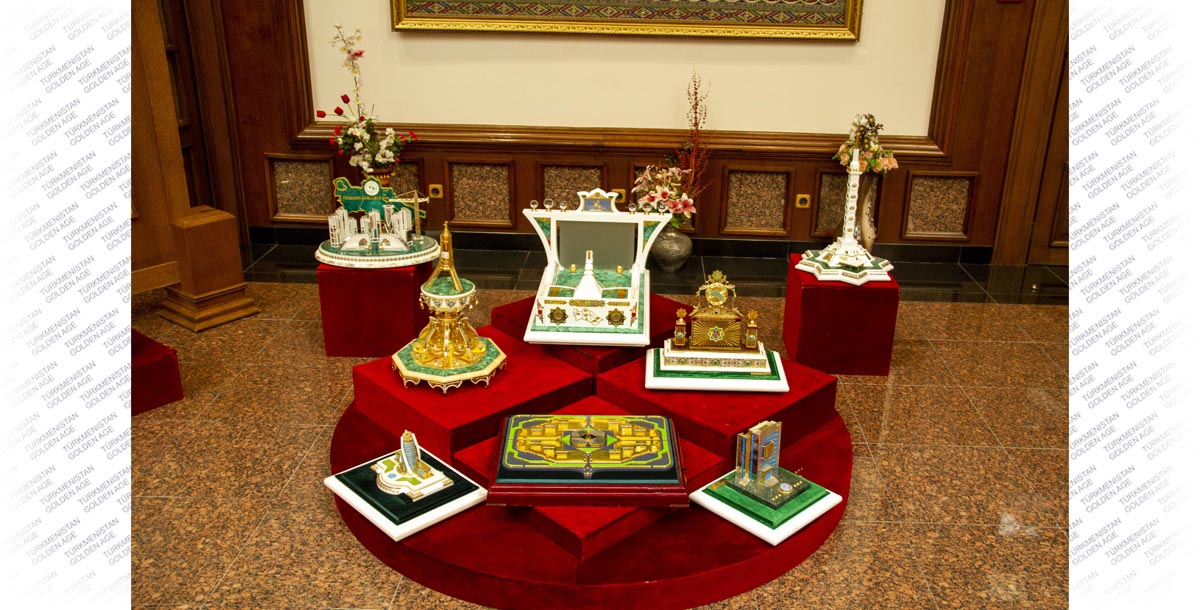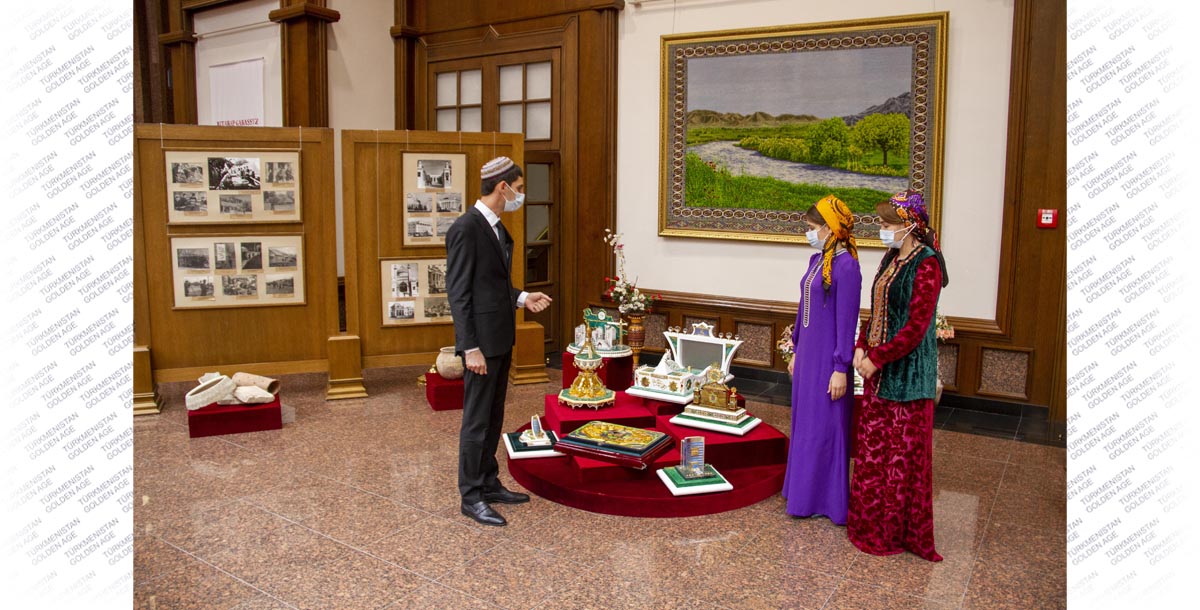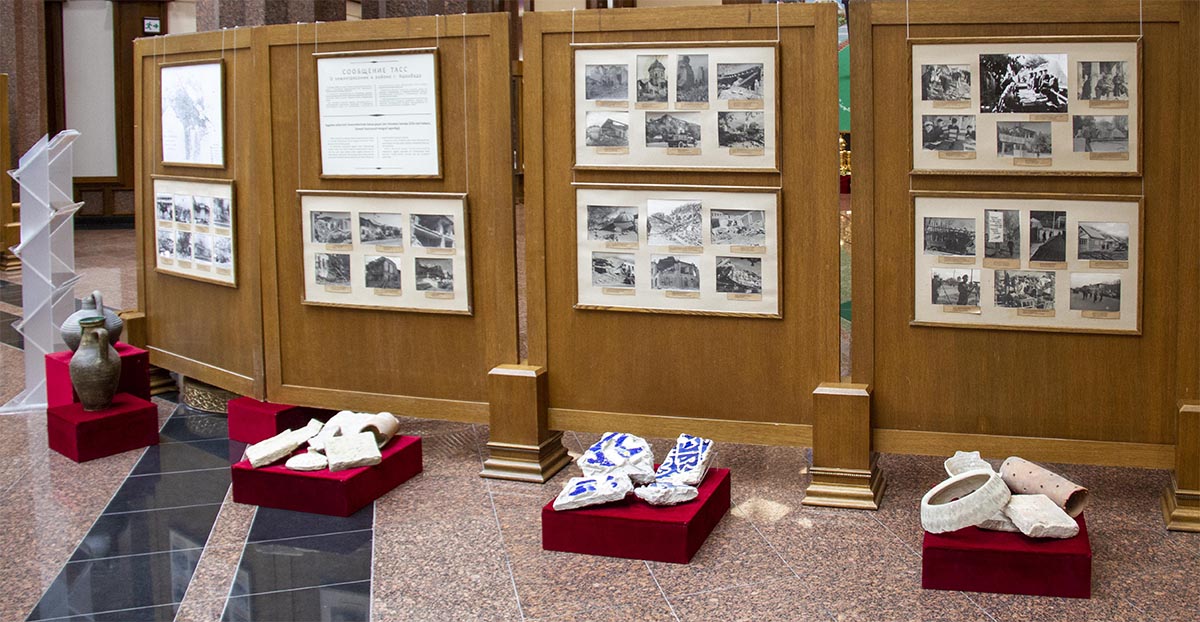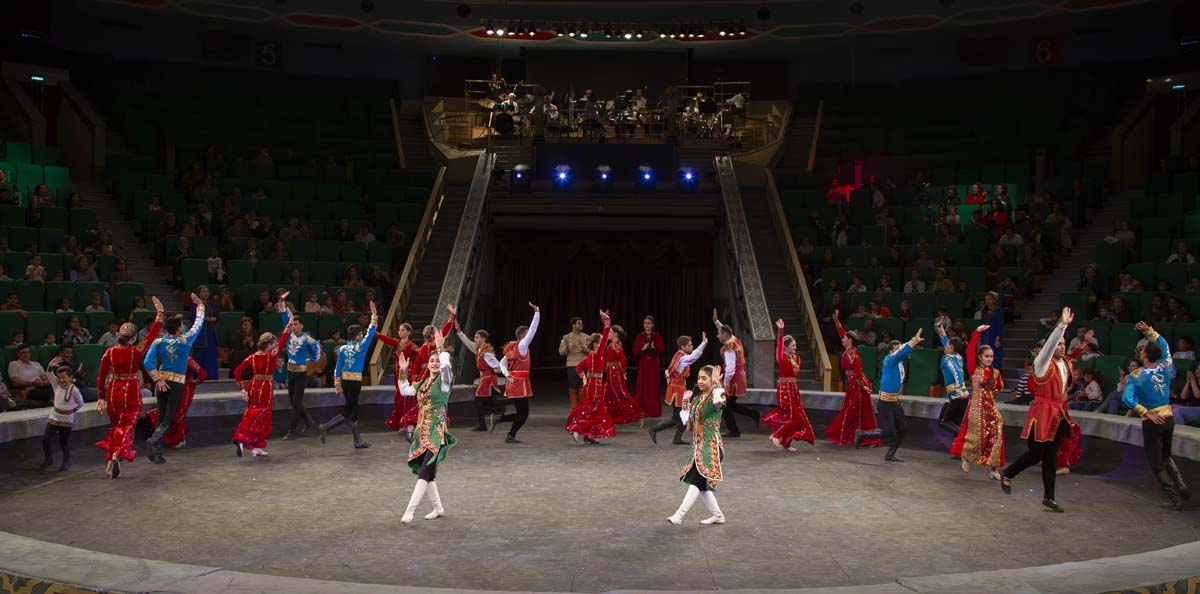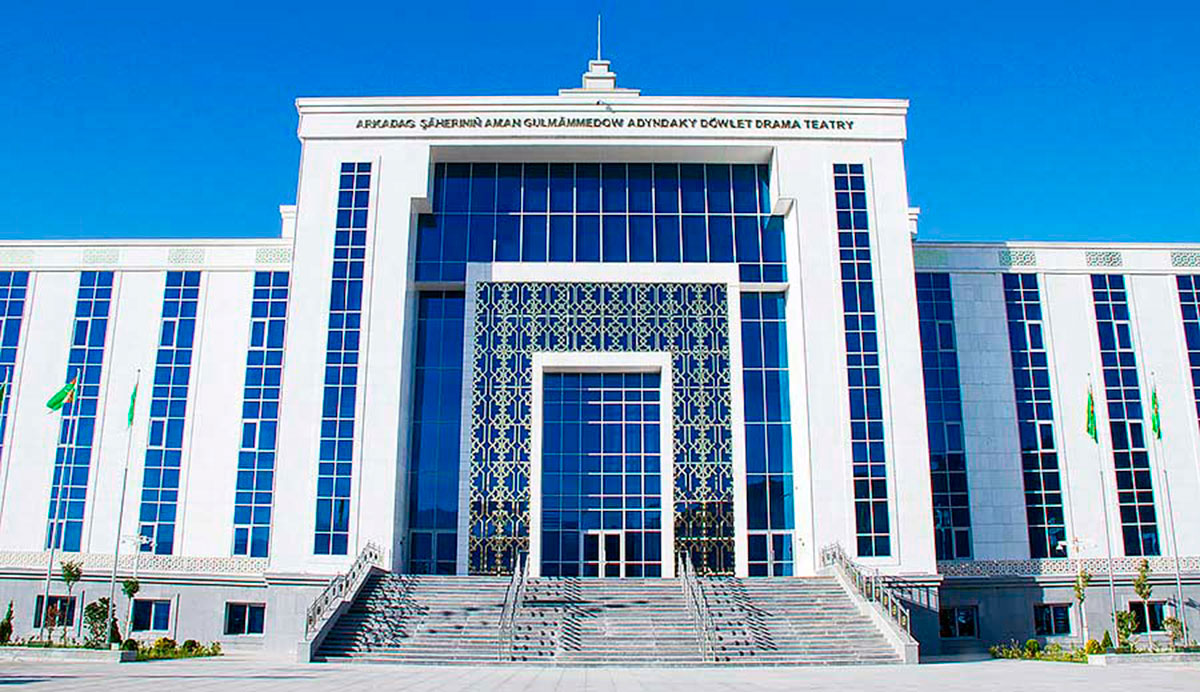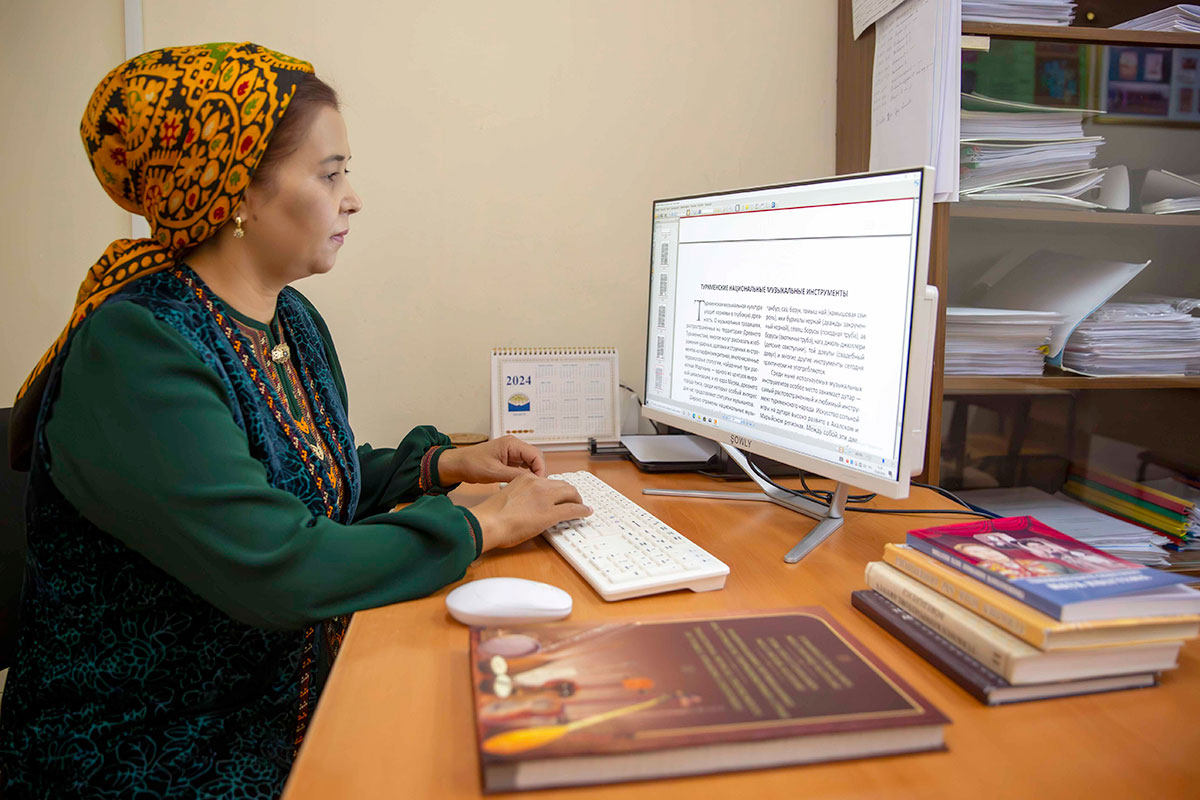The State Museum of the State Cultural Center of Turkmenistan hosts an exhibition "Sacred Memory". The exposition began with a TASS report on the earthquake displayed as an exhibit:
“On the night of October 6, 1948, an earthquake of up to 9 points occurred in the area of the Ashgabat city of the TSSR. As a result of the earthquake in the city of Ashgabat, there is great destruction. The earthquake destroyed a large number of residential buildings, there are many victims ...”.
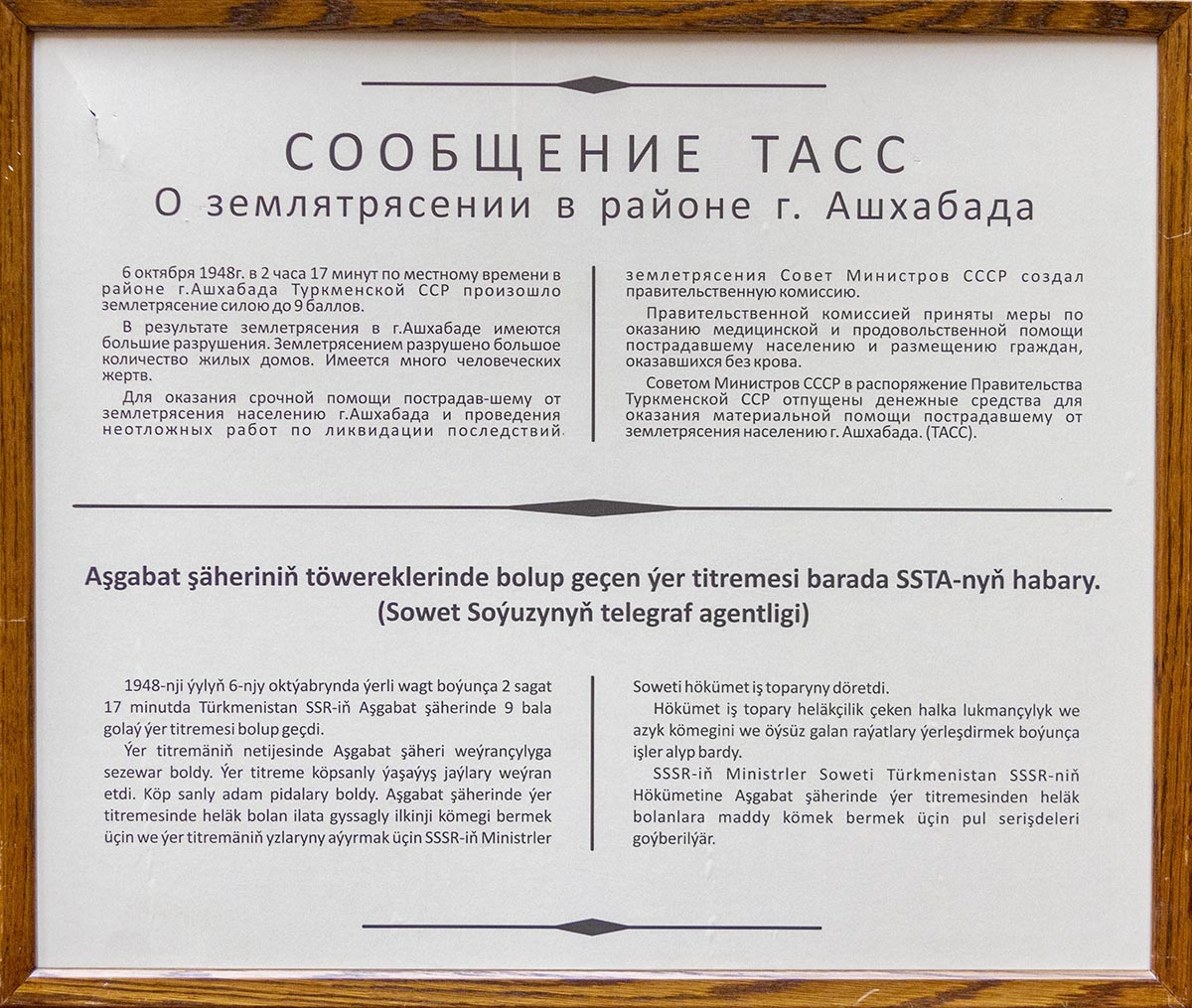
The whole world shuddered at the TASS report. But it was from the outside - both sympathy and a desire to help. And what a horror happened in the epicenter, when at 1 hour 12 minutes 5 seconds from the impact of the elements, residential buildings, museums, historical and cultural monuments, schools, factories, factories, hospitals suddenly turned into ruins, burying peacefully sleeping people under them. Tragedy, catastrophe, cataclysm - these words actually reflected the real terrifying meaning of what was happening.
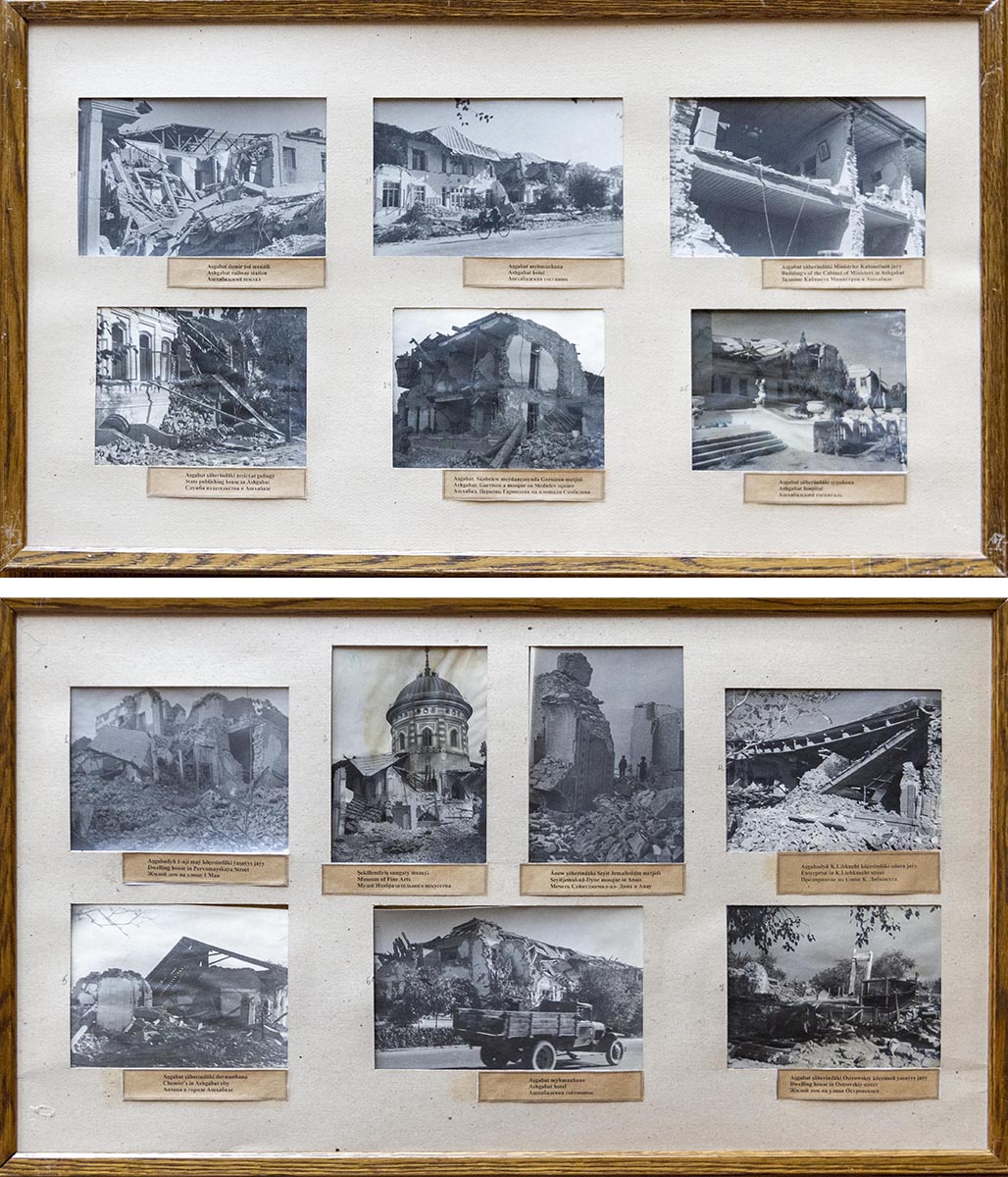
... 73 years have passed since that tragic date. And to this day, Turkmen people grieve for the victims of the Ashgabat earthquake, there are very few eyewitnesses to this natural disaster, but the stories of those who fell under the hand of the raging disaster remained alive.
In 2014, a complex of monuments "People's Memory" was built in Ashgabat, erected in honor of those killed in the Great Patriotic War, in the Geoktepe battle and during the Ashgabat earthquake.
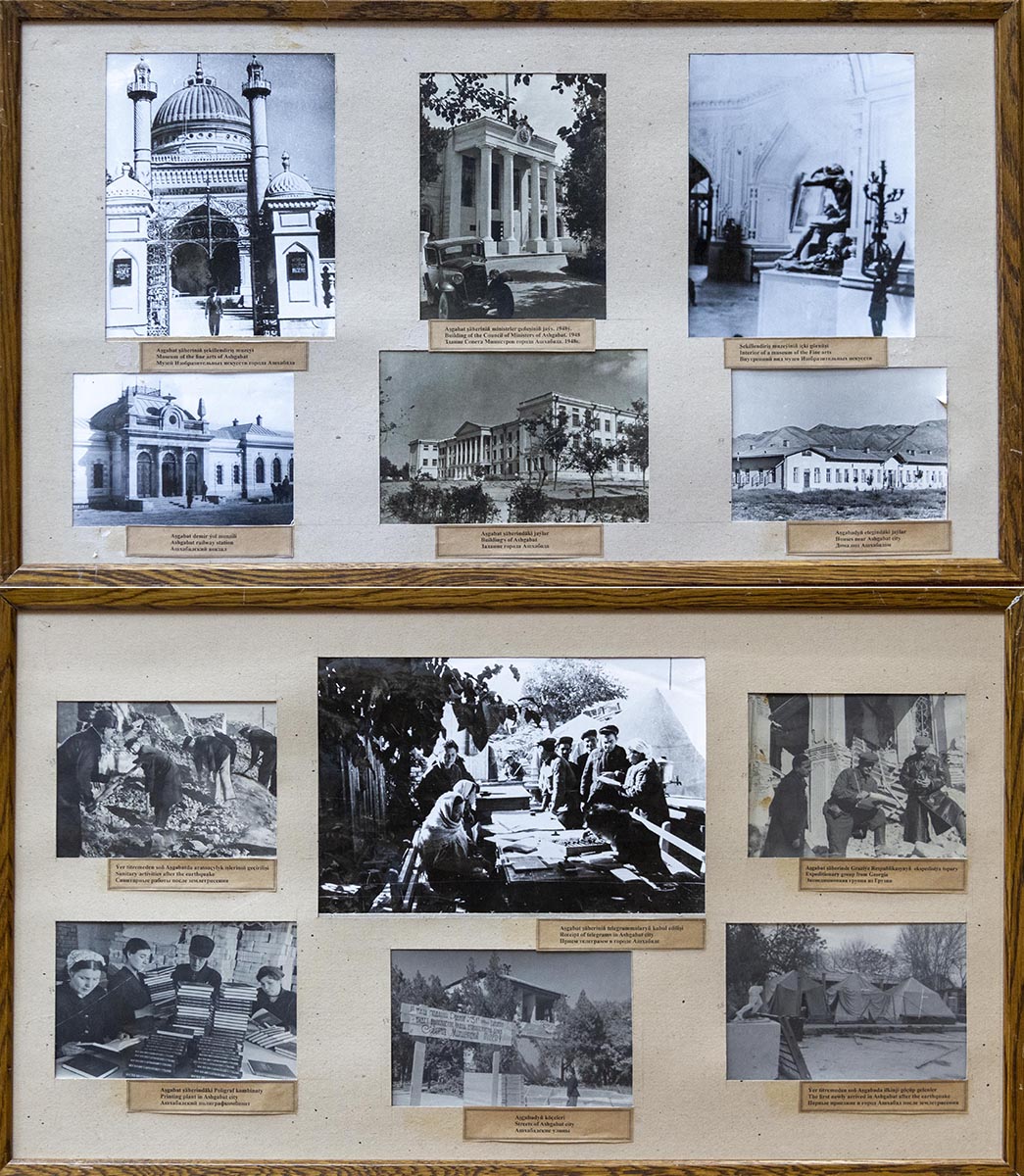
The exposition in the museum is presented in several sections. Valuable photographic materials from the museum's depositories reveal interesting information to visitors about what Ashgabat was like before the revolution, then it was called Askhabad. On photographic documents dating back to 1913, you can see the building of a caravanserai, a men's gymnasium, a Mosque of the Bahaism religious movement. And then - cozy Ashgabat before the earthquake, in the city center with two-storey buildings made of burnt bricks. Another section - what the joyful sunny city has become as a result of the earthquake ...
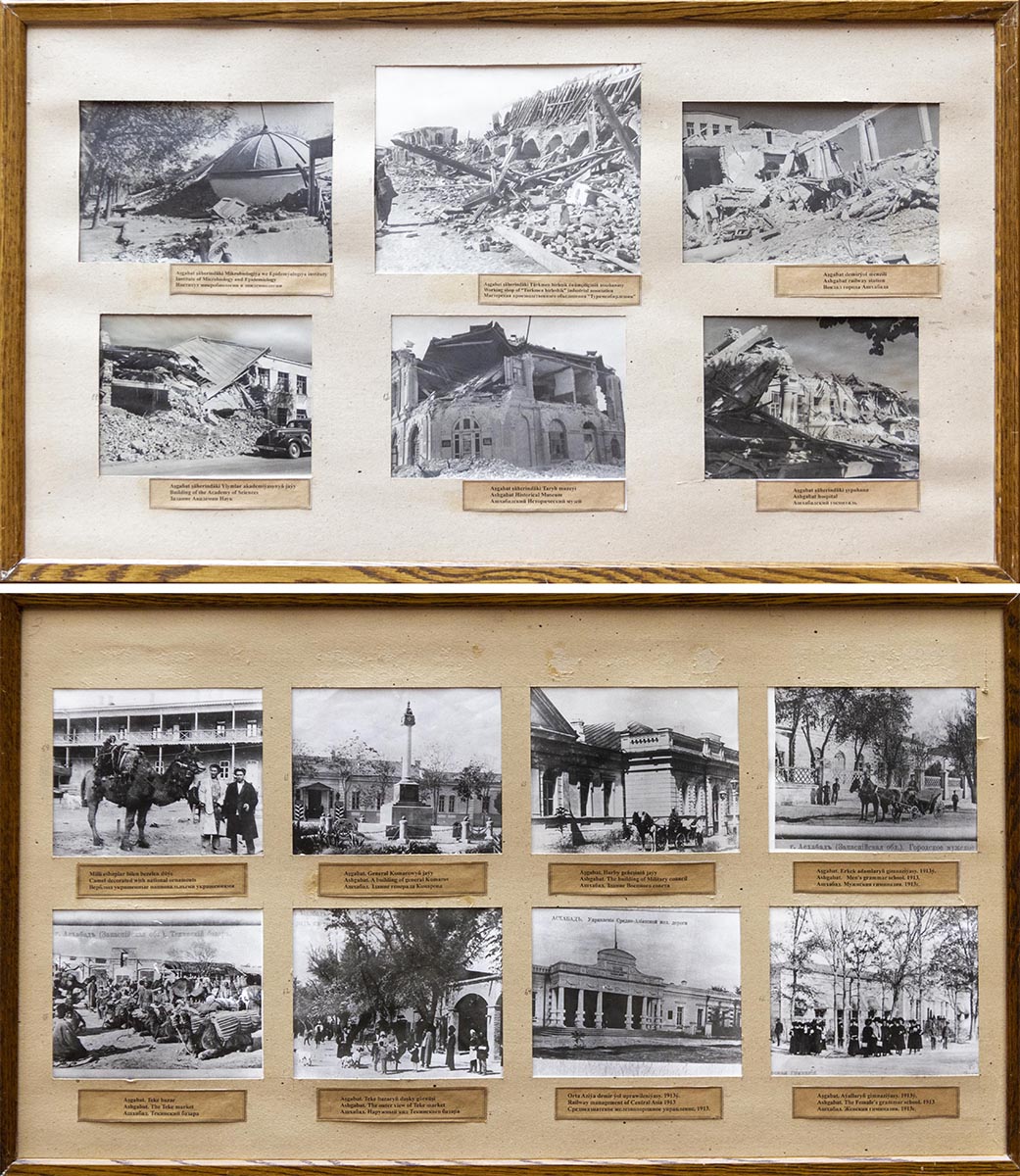
But Ashgabat people loved their city too much to leave it in ruins. Therefore, the rapid restoration of the capital began very soon. Builders came to help from many cities of the country, and Ashgabat residents themselves with enviable enthusiasm cleared the rubble, built temporary housing, erected new solid buildings. The mosque from the photo of 1913 after the destruction turned into a museum of local lore thanks to the builders. His photograph is also on the stand.
A carpet panel depicting new religious buildings familiar to all Turkmen people colorfully tells about modern white-marble Ashgabat.
Another exhibition was dedicated to the Geoktepe battle. Its stands are mainly represented by graphic drawings. Image of the Geoktepe fortress, weapons of those years. Particular attention was drawn to the picture about the heroic battle of the Geoktepe people, among whom there were women. An invincible spirit of warriors hovered in the air, akin to the spirit of the glorious Jelaletdin. These are heroes who, despite the superior forces of the enemy, stand to their death, defending their Fatherland. Eternal glory and veneration of descendants to them!
Tamara Glazunova
Photo: Alexey Gimalitdinov




